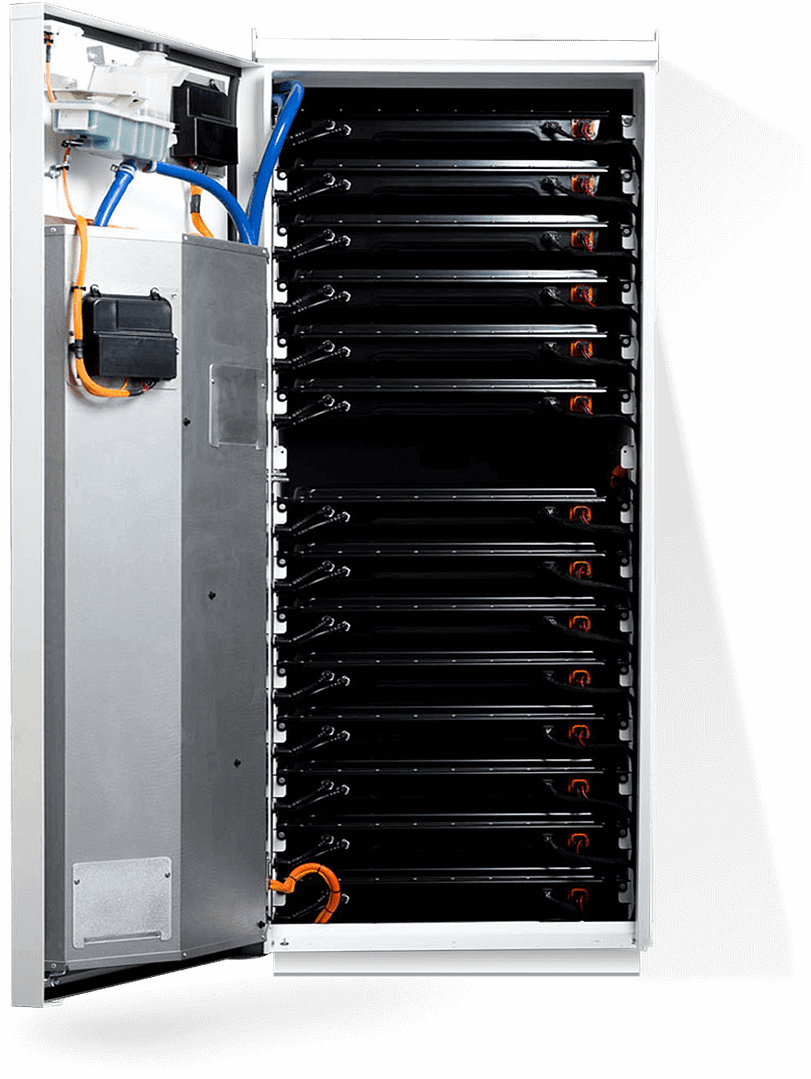POWERPACK TECHNOLOGY
Fully integrated turnkey solution
The Tesla Powerpack system is a complete AC connected energy storage solution, including DC batteries, bi-directional inverter and a Powerpack controller with intelligent software. The Powerpack controller is an on site computer interface creating control signals and relay commands to the inverter and DC Combiner based on integrated application control software.
Scalable
The Tesla Powerpack system is infinitely scalable and is suitable for applications ranging in size from 100 kWh to 100 MWh. The lay-out is modular allowing flexibility in meeting the special constraints of the site.
Outdoor rated
Tesla Powerpack’s enclosure is outdoor rated for all environments and thus no additional structures are required to house it. This simplifies installation and lowers site preparation expenses.
Enhanced safety
The Tesla Powerpack’s battery architecture consists of a low voltage battery with a DC/DC converter for added electrical isolation and safety. It also has an integrated liquid cooling / heating system allowing for pinpoint temperature control and thermal safety. The dual coolant and refrigerant loop system ensures optimal performance and efficiency.
State of the art technology
Tesla Powerpack guarantees long life and high efficiency with economies of scale in manufacturing leading to competitive pricing.

WHY CHOOSE TESLA POWERPACK?
Peak Shaving
Discharge at times of peak demand to avoid or reduce demand charges.
Load Shifting
Shift energy consumption from one point in time to another to avoid paying high energy prices. Where applicable, this price optimization accounts for solar or other on-site generation.
Emergency Backup
Provide intermediate backup power to your business in the event of a grid interruption. This function can be standalone or tied to solar.
Demand Response
Discharge instantly in response to signals from a demand response administrator to alleviate peaks in system load.
Capacity Reserve
Provide power and energy capacity to the grid as a standalone asset.
Transmission and Distribution Support
Supply power and energy capacity at a distributed location to defer or eliminate the need to upgrade aging grid infrastructure.
Scaleable Design
The Powerpack system scales to the space, power and energy requirements of any site, from small commercial businesses to regional utilities. It can be configured in various arrangements, offering far more modularity than competing models.
Fully Integrated Solution
Powerpack is a fully integrated, AC-connected energy storage system with everything needed to connect to a building or utility network. It dramatically simplifies installation, integration and future support, offering system-wide benefits that far outweigh those of standalone batteries.




